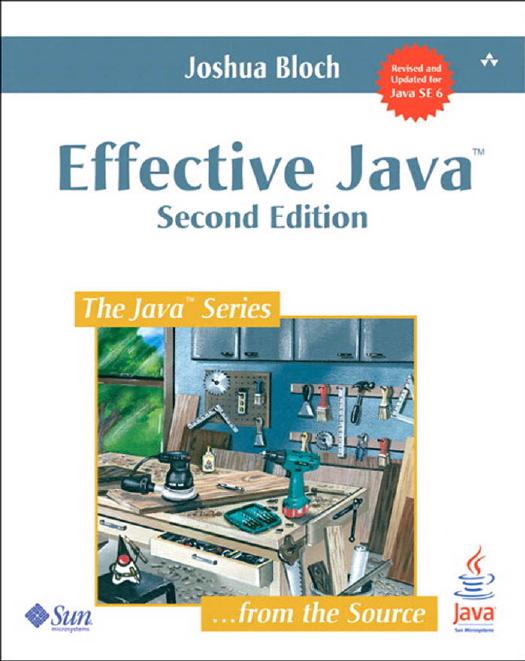Effective Java by Joshua Bloch

Author:Joshua Bloch
Language: eng
Format: epub, azw3, pdf
Publisher: Pearson Education Limited (US titles)
Published: 2018-06-30T04:00:00+00:00
Chapter 7. Lambdas and Streams
In Java 8, functional interfaces, lambdas, and method references were added to make it easier to create function objects. The streams API was added in tandem with these language changes to provide library support for processing sequences of data elements. In this chapter, we discuss how to make best use of these facilities.
Item 42: Prefer lambdas to anonymous classes
Historically, interfaces (or, rarely, abstract classes) with a single abstract method were used as function types. Their instances, known as function objects, represent functions or actions. Since JDK 1.1 was released in 1997, the primary means of creating a function object was the anonymous class (Item 24). Here’s a code snippet to sort a list of strings in order of length, using an anonymous class to create the sort’s comparison function (which imposes the sort order):
Click here to view code image
// Anonymous class instance as a function object - obsolete!
Collections.sort(words, new Comparator<String>() {
public int compare(String s1, String s2) {
return Integer.compare(s1.length(), s2.length());
}
});
Anonymous classes were adequate for the classic objected-oriented design patterns requiring function objects, notably the Strategy pattern [Gamma95]. The Comparator interface represents an abstract strategy for sorting; the anonymous class above is a concrete strategy for sorting strings. The verbosity of anonymous classes, however, made functional programming in Java an unappealing prospect.
In Java 8, the language formalized the notion that interfaces with a single abstract method are special and deserve special treatment. These interfaces are now known as functional interfaces, and the language allows you to create instances of these interfaces using lambda expressions, or lambdas for short. Lambdas are similar in function to anonymous classes, but far more concise. Here’s how the code snippet above looks with the anonymous class replaced by a lambda. The boilerplate is gone, and the behavior is clearly evident:
Click here to view code image
// Lambda expression as function object (replaces anonymous class)
Collections.sort(words,
(s1, s2) -> Integer.compare(s1.length(), s2.length()));
Note that the types of the lambda (Comparator<String>), of its parameters (s1 and s2, both String), and of its return value (int) are not present in the code. The compiler deduces these types from context, using a process known as type inference. In some cases, the compiler won’t be able to determine the types, and you’ll have to specify them. The rules for type inference are complex: they take up an entire chapter in the JLS [JLS, 18]. Few programmers understand these rules in detail, but that’s OK. Omit the types of all lambda parameters unless their presence makes your program clearer. If the compiler generates an error telling you it can’t infer the type of a lambda parameter, then specify it. Sometimes you may have to cast the return value or the entire lambda expression, but this is rare.
One caveat should be added concerning type inference. Item 26 tells you not to use raw types, Item 29 tells you to favor generic types, and Item 30 tells you to favor generic methods. This advice is doubly important when you’re using lambdas, because the compiler obtains most of the type information that allows it to perform type inference from generics.
Download
Effective Java by Joshua Bloch.azw3
Effective Java by Joshua Bloch.pdf
This site does not store any files on its server. We only index and link to content provided by other sites. Please contact the content providers to delete copyright contents if any and email us, we'll remove relevant links or contents immediately.
The Mikado Method by Ola Ellnestam Daniel Brolund(20724)
Hello! Python by Anthony Briggs(20010)
Secrets of the JavaScript Ninja by John Resig Bear Bibeault(18332)
The Well-Grounded Java Developer by Benjamin J. Evans Martijn Verburg(17688)
OCA Java SE 8 Programmer I Certification Guide by Mala Gupta(17496)
Kotlin in Action by Dmitry Jemerov(17308)
Algorithms of the Intelligent Web by Haralambos Marmanis;Dmitry Babenko(16319)
Grails in Action by Glen Smith Peter Ledbrook(15467)
Sass and Compass in Action by Wynn Netherland Nathan Weizenbaum Chris Eppstein Brandon Mathis(13331)
Test-Driven iOS Development with Swift 4 by Dominik Hauser(10417)
Windows APT Warfare by Sheng-Hao Ma(7833)
Layered Design for Ruby on Rails Applications by Vladimir Dementyev(7549)
Blueprints Visual Scripting for Unreal Engine 5 - Third Edition by Marcos Romero & Brenden Sewell(7452)
Solidity Programming Essentials by Ritesh Modi(4568)
Functional Programming in JavaScript by Mantyla Dan(4445)
Hands-On Full-Stack Web Development with GraphQL and React by Sebastian Grebe(4433)
WordPress Plugin Development Cookbook by Yannick Lefebvre(4388)
Unity 3D Game Development by Anthony Davis & Travis Baptiste & Russell Craig & Ryan Stunkel(4270)
The Ultimate iOS Interview Playbook by Avi Tsadok(4252)
